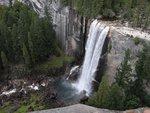July 9, 2009
NOAA scientists today announced the arrival of El Niño, a climate phenomenon with a significant influence on global weather, ocean conditions and marine fisheries. El Niño, the periodic warming of central and eastern tropical Pacific waters, occurs on average every two to five years and typically lasts about 12 months.
NOAA expects this El Niño to continue developing during the next several months, with further strengthening possible. The event is expected to last through winter 2009-10.
“Advanced climate science allows us to alert industries, governments and emergency managers about the weather conditions El Niño may bring so these can be factored into decision-making and ultimately protect life, property and the economy,” said Jane Lubchenco, Ph.D., under secretary of commerce for oceans and atmosphere and NOAA administrator.
El Niño's impacts depend on a variety of factors, such as intensity and extent of ocean warming, and the time of year. Contrary to popular belief, not all effects are negative. On the positive side, El Niño can help to suppress Atlantic hurricane activity. In the United States, it typically brings beneficial winter precipitation to the arid Southwest, less wintry weather across the North, and a reduced risk of Florida wildfires.
El Niño’s negative impacts have included damaging winter storms in California and increased storminess across the southern United States. Some past El Niños also have produced severe flooding and mudslides in Central and South America, and drought in Indonesia.
An El Niño event may significantly diminish ocean productivity off the west coast by limiting weather patterns that cause upwelling, or nutrient circulation in the ocean. These nutrients are the foundation of a vibrant marine food web and could negatively impact food sources for several types of birds, fish and marine mammals.
In its monthly El Niño diagnostics discussion today, scientists with the NOAA National Weather Service Climate Prediction Center noted weekly eastern equatorial Pacific sea surface temperatures were at least 1.0 degree C above average at the end of June. The most recent El Niño occurred in 2006.
El Niño includes weaker trade winds, increased rainfall over the central tropical Pacific, and decreased rainfall in Indonesia. These vast rainfall patterns in the tropics are responsible for many of El Niño’s global effects on weather patterns.
NOAA will continue to monitor the rapidly evolving situation in the tropical Pacific, and will provide more detailed information on possible Atlantic hurricane impacts in its updated Seasonal Hurricane Outlook scheduled for release on August 6, 2009.
NOAA understands and predicts changes in the Earth’s environment, from the depths of the ocean to the surface of the sun, and conserves and manages our coastal and marine resources.



